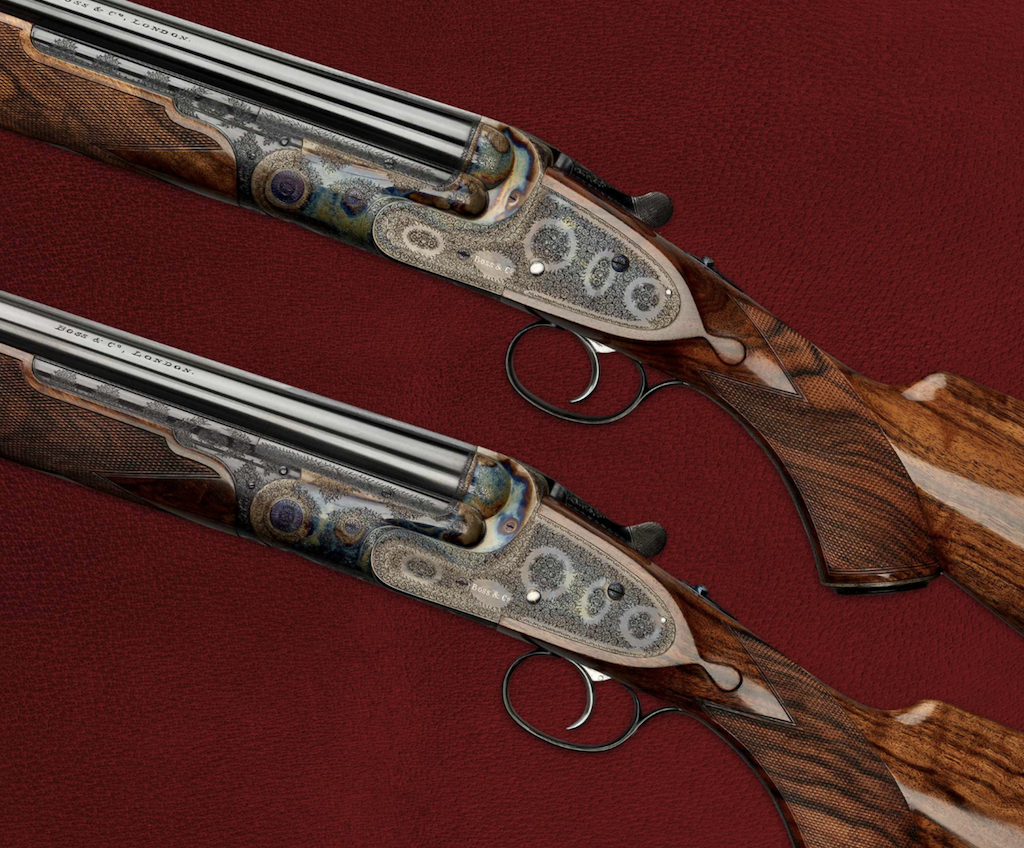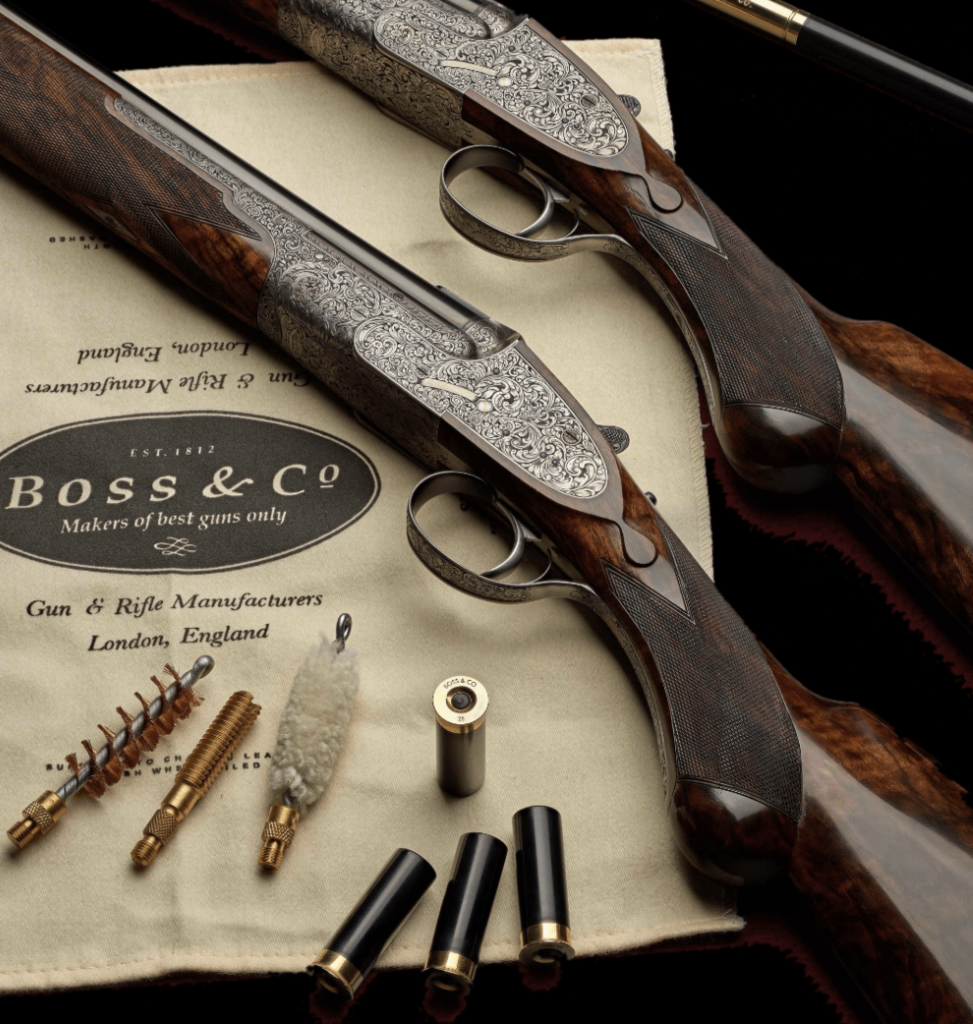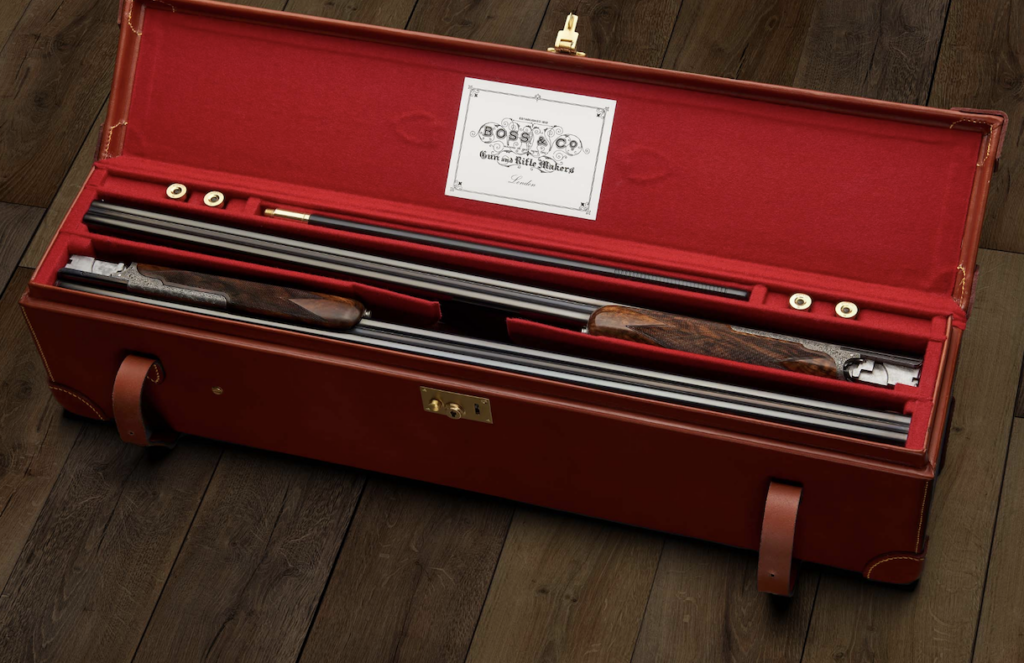
Caring for your Boss & Co shotgun is a relatively simple process, a five-minute clean after shooting, back in the gun cupboard and then only taken out again at the next shoot.
Yet in reality, it is a bit more detailed than that as the number of guns encountered with pitted barrels, rust patches, lifting ribs and oil soaked stocks will testify. Paradoxically, in addition, caring for your gun just a little too much can also be detrimental to it.

Upon returning from shooting, the first thing to do is to make sure your gun is not damp, especially so if you have been shooting in the rain. The gun should be split into three, stock, barrels and fore-end and thoroughly dried with a cloth, paying particular attention to the barrel ribs, extractors and around the action flats. If any water remains in these areas and the gun is put into the gun cupboard, the dreaded rust will soon appear, lifting ribs and eating its way into the mechanism. After a wet days shooting, it is a good idea, even after thoroughly drying the gun, to leave the three parts separately in a warm room for an hour or so to make sure the gun is thoroughly dry before it is put away.
Cleaning the barrels depends upon how many shots have been fired. If you have fired hundreds of shots then the chances are that there may be a slight lead build up in the barrels. In this case a wire brush on the cleaning rod is the first step to dislodge the lead. If only a few shots have been fired, this is not necessary and the second stage, a bristle jag can be employed. The bristle brush is a soft brush that gently scrapes dirt and residue and is worked hard up and down the barrels several times. Pay attention to the area in front of the chambers as this can be quite a dirty area.
After the bristle brush, a piece of tow or rag should be worked up and down the barrels to give them that final clean. It will be apparent how much residue there still is in the barrels as the cloth will become black with a few pulls up and down. Finally, after an inspection from either end to ensure they are glistening, put just two or three drips of oil on the wool mop and slide it up the barrels just once. Wipe of any extraneous oil at the muzzle and breech. The oil should be gun oil, a slightly thicker oil than normal commercial oil that is a thin oil and runs very easily. To finish the barrels, apply just one drop of oil at the muzzle and breech and rub it on all over the barrels to give a very light oil covering.

And this is where the paradox can come in. A great many guns have been ruined with overzealous care in the belief that you can never have enough oil on a gun. Oil mops are soaked in oil and worked up and down the barrels and the exterior of the barrels and action are also smothered in oil. When the gun is stored in the cupboard, this oil will run off the barrels and action and over the years will permeate into the stock and forend causing severe degradation of the stock. Even a small amount of oil in the barrels will find its way into the breech and it is a good idea to check this every month or so and wipe off the excess oil.